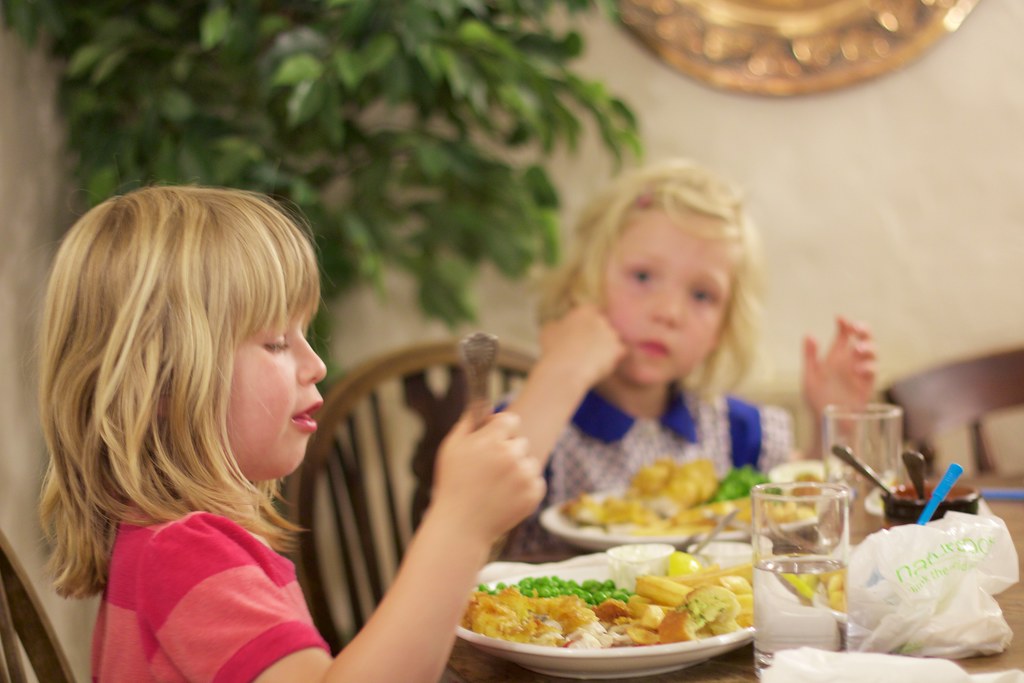Let’s start by being honest. There are some children – and it could be yours – who will never eat fish under any circumstances. Some of these stubborn kids will grow up and change their minds. And some will stick to a total fish-denial programme all their lives, and there’s nothing you can do about it. But until you’re sure, it’s worth trying to teach your child to love fish. After all, eating fish regularly is considered one of the healthiest eating habits.
Why don’t kids like fish?
Firstly, because it has a very distinctive smell, unlike anything else. If a child does not grow up by the sea or the river, and at home in the kitchen from his childhood nails were not the aroma of cooking fish – a good chance that the flavor that he does not like. And what he doesn’t even like to smell, no normal person would put in his mouth. Second, a tiny bone, stuck in the child’s throat, can permanently discourage any further experiments with this insidious product. Conclusion? Start acquaintance baby with the fish better with the most neutral varieties – and in the form of filets.
Ideally, you want to introduce the baby to the taste of this product as early as possible. Proved that it’s the early taste experience that determines the future eating habits. At 1.5-2 years, you can, for example, offer not only the fish itself, but the liquid fish oil in droplets. Paradoxically, many children react to it calmly. It is quite possible that in this way you will foster, if not love, then loyalty to fish.
What kind of fish are children allowed to eat?
More precisely, what kind of fish is not allowed for children (all other fish are allowed).
Fish that can accumulate methylmercury in their bodies, albeit in very small doses: tuna, swordfish, oily fish (escolar), etc. It can cause all sorts of developmental disorders.
Very oily fish, this applies to children under 3 years of age: oily, mackerel, farmed salmon, sturgeon, herring. The body in infancy finds it difficult to cope with complex fats, which it will need so much at a more mature age. Until the age of three, children should be given codfish (haddock, pollack, cod), hake, perch, pike-perch, lake trout.
River fish from dubious sources. If you have caught it yourself in the cleanest river in an ecologically clean area – one thing. But buying pangasius (aka sea tongue) from the filthiest river Mekong in Asia is another matter. Also, more often than not, river fish have a lot of bones, which are hard to get rid of.
Raw sea fish from dubious sources. Raw river fish should not be categorized under any conditions – there are too many parasites in it, much more than in the sea.
Nutritionists say that it is better to give children fish not more than 2-3 times a week.
What are the benefits of fish for children?
Calcium and phosphorus in fish help build strong bones. Iodine in fish normalizes the thyroid gland. Fluorine, potassium and bromine are necessary for the proper development of children’s bodies. But perhaps the most important thing in fish – it’s valuable, easy to digest protein, and even the most useful fat in the world. Omega-3 fatty acids in fish strengthen the immune system, reduce hyperactivity and irritability, help develop memory and in general all the intellectual abilities. In adolescence, they help the skin to be clear, the hair to be thick, the nails to be strong, and also regulate hormonal maturation. Fish is good that good Omega-3 acids are present in its natural form, and even in a bundle with other necessary components of the body. This means that they are absorbed much better than in the form of dietary supplements. Synthesized supplements cannot be a substitute for a complete meal, so if your child eats fish very rarely, add natural fish oil to their menu.
Disguise
Let’s return to the fact that children may not like fish – because of its bright taste and specific smell. Usually parents have the following tactic: give the child a taste of fish in its pure form – the child refuses to eat it – start “hiding” the fish (mixing it into all kinds of dishes, pretending that no fish is there).
It is better to try the opposite. First, give your child fish in dishes where it is not immediately discernible – in dumplings and unsweetened dumplings, casseroles, rolls, cutlets and meatballs, burgers, spreads, sandwiches, cakes. Fish is soft, crumbles easily, mixes perfectly with vegetable purees (especially potato and green vegetables), feels great in cream sauce and béchamel sauce – in julienne and as a condiment to pasta – baked perfectly as “cheese crust” where cheese and fish are 50/50.
If it goes well – you can also reveal the true face of your casserole by layering the fish in an obvious layer. Leave the large pieces in the sauce. In the cheese crust, change the ratio in favour of the fish, etc.
Pasta with fish
Most children love pasta. And creamy or cheesy sauces. There’s only one thing left to do: add some fish to the combination. It’s important not to overcook it – then it will be an unpleasant contrast to the soft pasta and delicate sauce. For advanced fish-eaters, put small pieces of raw fish in the almost cooked sauce and heat over a low heat for no longer than 3-4 minutes. And if you have the task of hiding the fish, a blender will help you out. By the way, pasta in the shape of animals or fish will make the experiment a little more reliable.
Fish in the oven
Adult fish eaters are used to baking whole fish in the oven. Not so in our case. Make the kids a batch fish soufflé – it’s airy, tender, and looks pretty – why not try it? You can make it with any fish you have available. Another option is Fisherman’s Pie, where in a deep mould, the bottom layer is fish mixed with béchamel sauce and topped with mashed potatoes and cheese.
Fish in a pan
Pan-fried fish can only be “hidden” in one way – by making fish fingers or nuggets. The second method is more suitable for particularly picky children, as it is made with minced fish fried in a crispy crust. The first is fresh fish slices cut into rectangles and fried in breadcrumbs.
Fish soup
Uha or rich fish broths are not a wise solution for parents who want to break their child’s strong desire not to take a piece of fish in the mouth. The ideal soup for this child is a delicate cream soup of who-knows-what. Put a child’s favorite ingredient in the soup – potatoes or courgettes, for instance. Add some fish. Once boiled, whisk in a blender, adding butter or cream. And offer croutons to such a ‘cream’. Another good option is a soup with fish and meatballs (see below).
Fish cutlets and meatballs
Cutlets are our traditional food and are often cooked at home, and fish cutlets can become as cozy and a favorite lunch as meat cutlets. If you add fatty cottage cheese to the minced fish, the cutlets will be more tender, fluffier and less fishy in terms of flavor. Onions for fish cutlets should be chopped, sautéed with butter and salt, pureed with a blender and then mixed into the minced meat. Greens in cutlets – a great solution, the more of them, the cutlets are healthier and juicier … but alas, most children with greens relationship is even more strained than with fish. Meatballs are often “in” for those children who aren’t too fond of picking at cutlets. Small meatballs for one bite can be boiled in soup or fried in the oven, and then threaded on a skewer – as if it were a kebab.
Fish and cheese curds
Rolls are a magical food format. For some reason, they please most children (and adults, for that matter). And the combination of soft cheese (curd or cream cheese) or cottage cheese beaten with a blender to a gentle cream with salted or baked fish works perfectly in this format. Crunchy cucumbers and radishes, leafy greens, slices of tender avocado and hard-boiled eggs are also good in this company. You can smear cheese/cottage cheese on a pita sheet or flatbread, lay out all the ingredients and roll up and then slice into one bite, or leave the roll long enough for you to gnaw into. Or you can pack it all inside a baguette cut in half, taking out some of the crumb. You can put it between two slices of sandwich bread, choosing the one that’s healthier. Or don’t use bread at all and use nori or salad leaves for Asian-style rolls.
Fashion and friendship
If your child’s company likes ‘fancy’ pizza and/or sushi, this is the perfect way to get them into a fishy menu. “As friends are supposed to do, we all share in half” is a principle that still works. Shared children’s parties, where everyone cooks sushi and pizza together (including fish, of course) and then eats together in friendship, are preferable to going to a restaurant. In general, if a child cooks his own food, he is likely to at least try it. And then, you see, he will get used to it.
One last thing. Even if all your efforts lead nowhere, keep trying. Most importantly, it’s unobtrusive, no pressure at all. “Me and Daddy have some really good sandwiches, why don’t you take a bite?” “When we go to Turkey by the sea, we’ll take you to a restaurant where they make fish and shawarma.” And someday, maybe the child will pinch it off and get a bite – for everybody’s enjoyment.

